|
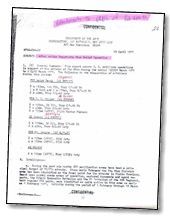 1.
After Action Reports
(AAR's): are just what the name implies, a document drawn up after the
action has occurred and usually goes into greater detail than the normal
records. They typically include hand drawn maps with enemy and friendly
locations. Arrows show movement of troops or thrusts against perimeter
defenses, etc. Not all action warrants the creation of After Action
Reports… case in point, the night I was wounded there were 13 WIA and
1 KIA, 1 HERB FAC was shot down and counter battery fire techniques
could not be utilized because of close proximity of an RF/PF night location.
They were 100 meters from the enemy mortars and didn't bother to get
involved… they didn't even answer the radio calls and there were no
AAR's filed. In the case of Artillery Units most AAR's are incorporated
into the official records and are not separate documents. 1.
After Action Reports
(AAR's): are just what the name implies, a document drawn up after the
action has occurred and usually goes into greater detail than the normal
records. They typically include hand drawn maps with enemy and friendly
locations. Arrows show movement of troops or thrusts against perimeter
defenses, etc. Not all action warrants the creation of After Action
Reports… case in point, the night I was wounded there were 13 WIA and
1 KIA, 1 HERB FAC was shot down and counter battery fire techniques
could not be utilized because of close proximity of an RF/PF night location.
They were 100 meters from the enemy mortars and didn't bother to get
involved… they didn't even answer the radio calls and there were no
AAR's filed. In the case of Artillery Units most AAR's are incorporated
into the official records and are not separate documents.
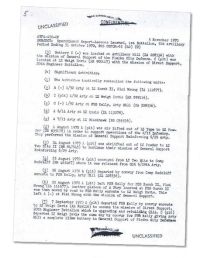 2.
Operational Reports-Lessons Learned (ORLL's): This set of documents
(roughly 40-50 pages) is where you will find just about anything you
ever wanted to know and then some. For the 1/92nd the records were sent
to and compiled by 52nd Artillery Group Headquarters. If your unit was
under 52nd Group (see link above) you will find your stuff here. ORLL's
were published every quarter (3 months) and 52nd Group ORLL's ran from
February thru January not January thru December as you may think. ORLL's
contained ammo expended by type and size and by unit. They contain significant
operations, the units that were involved as well as the movement from
firebase to firebase and in some instances the grid coordinates of the
firebase. Some of them contain lessons learned about how to and how
not to airlift PSP sections and or ammo. They will contain dates for
significant items, which will help, narrow the search prior to requesting
additional documents. Depending on when you there (some BN commanders
sent more or less than others or maybe Group just published more) you
might find the number of Malaria and VD cases by unit along with Article
15's and Courts Martial numbers. 2.
Operational Reports-Lessons Learned (ORLL's): This set of documents
(roughly 40-50 pages) is where you will find just about anything you
ever wanted to know and then some. For the 1/92nd the records were sent
to and compiled by 52nd Artillery Group Headquarters. If your unit was
under 52nd Group (see link above) you will find your stuff here. ORLL's
were published every quarter (3 months) and 52nd Group ORLL's ran from
February thru January not January thru December as you may think. ORLL's
contained ammo expended by type and size and by unit. They contain significant
operations, the units that were involved as well as the movement from
firebase to firebase and in some instances the grid coordinates of the
firebase. Some of them contain lessons learned about how to and how
not to airlift PSP sections and or ammo. They will contain dates for
significant items, which will help, narrow the search prior to requesting
additional documents. Depending on when you there (some BN commanders
sent more or less than others or maybe Group just published more) you
might find the number of Malaria and VD cases by unit along with Article
15's and Courts Martial numbers.
3. Situation
Reports (Sit Reps, pictured at top of page): For most historian
uses, this information is pretty ill-defined and almost code like but
when used in context with t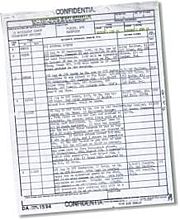 he
ORLL's it can sometimes shed light onto what you are trying to clarify.
Be warned though, when I asked for Sit Reps for a 5-day period (30JAN71
to 3FEB71) there were 47 pages to copy… so know what you want before
you ask. he
ORLL's it can sometimes shed light onto what you are trying to clarify.
Be warned though, when I asked for Sit Reps for a 5-day period (30JAN71
to 3FEB71) there were 47 pages to copy… so know what you want before
you ask.
4. Daily
Staff Journals: These items are like the basic logbook for phone
and radio calls to the office. When you roadmarched for example Group
was notified and it was noted on the log by date and time and who called
it in and who took the call. When you arrived in your new home another
call was made and logged with what time you arrived and what time the
unit (Btry, (-) or Plt) was laid and ready to fire. The grid coordinates
were generally noted for the battery center when relocation was called
into Group. Sit Reps average 2-3 pages per 24-hour period.
|
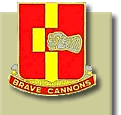

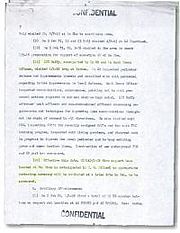
 1.
After Action Reports
(AAR's): are just what the name implies, a document drawn up after the
action has occurred and usually goes into greater detail than the normal
records. They typically include hand drawn maps with enemy and friendly
locations. Arrows show movement of troops or thrusts against perimeter
defenses, etc. Not all action warrants the creation of After Action
Reports… case in point, the night I was wounded there were 13 WIA and
1 KIA, 1 HERB FAC was shot down and counter battery fire techniques
could not be utilized because of close proximity of an RF/PF night location.
They were 100 meters from the enemy mortars and didn't bother to get
involved… they didn't even answer the radio calls and there were no
AAR's filed. In the case of Artillery Units most AAR's are incorporated
into the official records and are not separate documents.
1.
After Action Reports
(AAR's): are just what the name implies, a document drawn up after the
action has occurred and usually goes into greater detail than the normal
records. They typically include hand drawn maps with enemy and friendly
locations. Arrows show movement of troops or thrusts against perimeter
defenses, etc. Not all action warrants the creation of After Action
Reports… case in point, the night I was wounded there were 13 WIA and
1 KIA, 1 HERB FAC was shot down and counter battery fire techniques
could not be utilized because of close proximity of an RF/PF night location.
They were 100 meters from the enemy mortars and didn't bother to get
involved… they didn't even answer the radio calls and there were no
AAR's filed. In the case of Artillery Units most AAR's are incorporated
into the official records and are not separate documents. 2.
Operational Reports-Lessons Learned (ORLL's): This set of documents
(roughly 40-50 pages) is where you will find just about anything you
ever wanted to know and then some. For the 1/92nd the records were sent
to and compiled by 52nd Artillery Group Headquarters. If your unit was
under 52nd Group (see link above) you will find your stuff here. ORLL's
were published every quarter (3 months) and 52nd Group ORLL's ran from
February thru January not January thru December as you may think. ORLL's
contained ammo expended by type and size and by unit. They contain significant
operations, the units that were involved as well as the movement from
firebase to firebase and in some instances the grid coordinates of the
firebase. Some of them contain lessons learned about how to and how
not to airlift PSP sections and or ammo. They will contain dates for
significant items, which will help, narrow the search prior to requesting
additional documents. Depending on when you there (some BN commanders
sent more or less than others or maybe Group just published more) you
might find the number of Malaria and VD cases by unit along with Article
15's and Courts Martial numbers.
2.
Operational Reports-Lessons Learned (ORLL's): This set of documents
(roughly 40-50 pages) is where you will find just about anything you
ever wanted to know and then some. For the 1/92nd the records were sent
to and compiled by 52nd Artillery Group Headquarters. If your unit was
under 52nd Group (see link above) you will find your stuff here. ORLL's
were published every quarter (3 months) and 52nd Group ORLL's ran from
February thru January not January thru December as you may think. ORLL's
contained ammo expended by type and size and by unit. They contain significant
operations, the units that were involved as well as the movement from
firebase to firebase and in some instances the grid coordinates of the
firebase. Some of them contain lessons learned about how to and how
not to airlift PSP sections and or ammo. They will contain dates for
significant items, which will help, narrow the search prior to requesting
additional documents. Depending on when you there (some BN commanders
sent more or less than others or maybe Group just published more) you
might find the number of Malaria and VD cases by unit along with Article
15's and Courts Martial numbers. he
ORLL's it can sometimes shed light onto what you are trying to clarify.
Be warned though, when I asked for Sit Reps for a 5-day period (30JAN71
to 3FEB71) there were 47 pages to copy… so know what you want before
you ask.
he
ORLL's it can sometimes shed light onto what you are trying to clarify.
Be warned though, when I asked for Sit Reps for a 5-day period (30JAN71
to 3FEB71) there were 47 pages to copy… so know what you want before
you ask.